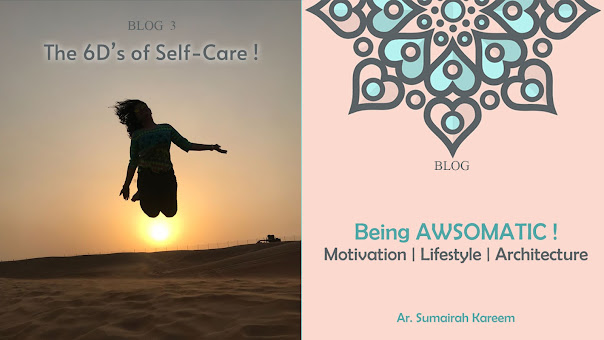Nature & Architecture
Celebrating the Silver Jubilee mark of 25 blogs, I present to you this highly informative & creative blog on "Nature & Architecture". Putting light on the many ways architecture is connected to nature, its impact on the environment & the major points on what Architects solely hold responsibility for at all times. So let's look at 5 amazing ways nature & architecture speak out a language common to all!
1. Relationship between Architecture & Environment
Architecture's first connection with nature starts with its environment. The creation of space & good architecture is not possible without understanding their relationship with the natural systems and the surrounding environment for a better life on earth & the reduction towards the carbon footprint.
Architects need to make buildings that are friendly to the environment and more green which can be adaptable to the surroundings. After the completion of the construction, the functioning of the building leaves a long-term effect on the ecosystem, hence catering to a need to protect mother earth & its natural habitat.
2. Architectural Wonders Inspired by Nature
Many famous building takes their inspiration from nature as a concept usually referred to as Biomimicry Architecture. For example – Helix Bridge in Singapore inspired from a DNA molecule, Lotus Temple in New Delhi inspired from a Lotus plant, etc or even
 |
| 30 St. Mary Axe – London inspired from Venus Flower Basket Sponge |
Here are some of the other 3 architectural wonders inspired by nature explained:
· Beijing National Stadium: Beijing
Designed by Swiss architecture firm Herzog
& de Meuron for the 2008 Olympic Games, the locals nicknamed this stadium
the “Bird’s Nest” before it was even completed. The spaces between them are
filled with a translucent membrane, just as birds stuff the empty spaces in
their nests with materials.
 |
| Beijing National Stadium: Beijing |
· Sagrada Familia: Barcelona
While Antoni Gaudí modeled this church after tree trunks and their branching canopies and one who enters feel as though
they’re walking into an enormous forest - just as the Architect intended.
 |
| Sagrada Familia: Barcelona |
· Aldar Headquarters: Abu Dhabi
This circular skyscraper gave its tribute to the city’s
maritime heritage, Marwan Zgheib, and his Lebanon-based firm MZ Architects were
inspired by the clamshell.
 |
| Aldar Headquarters: Abu Dhabi |
3. Predominant Styles
So let’s look at three predominant styles of architecture that attempt to exist in harmony with nature:· Organic architecture
Organic architecture is a philosophy of architecture that
promotes harmony between human habitation and the natural world. For example - Fallingwater
by Frank Lloyd Wright, Casa Milà by Antoni Gaudi, Robie House by Frank Lloyd
Wright.
 |
| Fallingwater by Frank Lloyd Wright |
· Invisible architecture
These buildings may not look natural on their own but when
placed within their particular context, they all but disappear. For example - British
Pavilion by Heatherwick Studios, Optical Glass House by Hiroshi Nakamura, The
Glass House by Santambrogiomilao Group.
 |
| British Pavilion by Heatherwick Studios |
· Biomimetic architecture
“Biomimicry borrows nature's blueprints, recipes, processes, and ecosystem strategies and then comes up with design principles to solve our own problems.” Biomimicry allows designers to adopt the same solutions to the built environment but in a fraction of the time. For example - Council House 2 @ Melbourne inspired by the concept of termite mounds systems and Milwaukee Art Museum @ Wisconsin inspired by the wings of birds and the sailing culture on Lake Michigan.
 |
| Melbourne, Milwaukee Art Museum @ Wisconsin |
4. Green Buildings & Sustainable Architecture
Architects need to create buildings that are energy efficient, like green buildings or sustainable buildings which are designed to reduce the overall impact of the built environment on human health and nature.
Sustainable architecture is an architecture that seeks to minimize the
negative environmental impact of buildings by efficiency and moderation in the
use of materials, energy, development space, and the ecosystem at large.
Sustainable architecture uses a conscious approach to energy and ecological
conservation in the design of the built environment.
5. Biophilic Designs
Biophilic design is a concept used within the building industry to increase occupant connectivity to the natural environment through the use of direct nature, indirect nature, and space and place conditions. Used at both the building and city-scale, it is argued that this idea has health, environmental, and economic benefits for building occupants and urban environments, with few drawbacks.
🤍 Follow | Comment | Subscribe 🤍
My WEBSITE | My LinkedIn | My Pinterest | My Portfolio







👏🙂
ReplyDelete